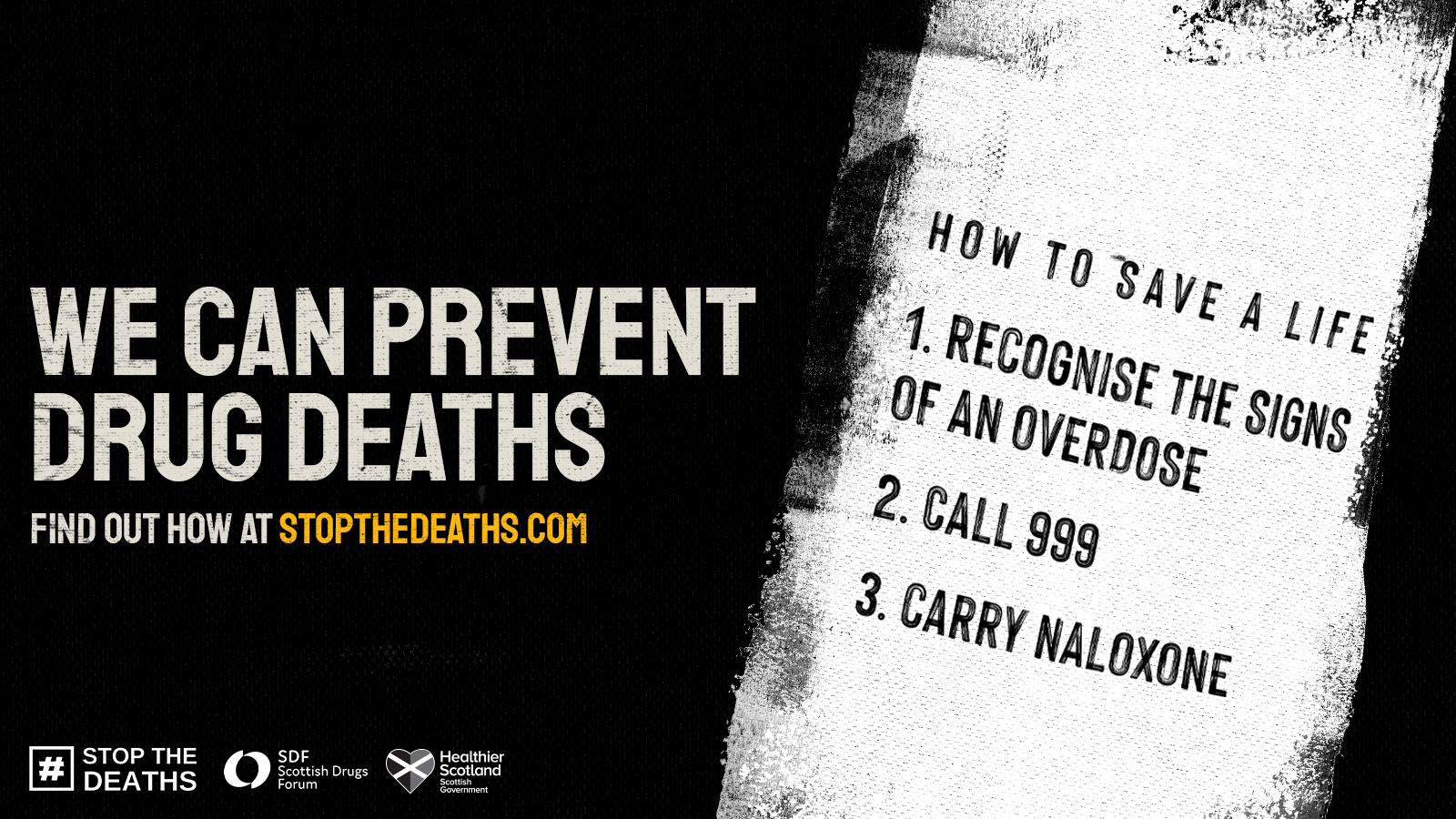 21 September 2022
21 September 2022
An evaluation of last year’s “How to Save a Life” campaign undertaken by Glasgow Caledonian University and Liverpool John Moores University’s Public Health Institute has been published.
The campaign, which was commissioned by the Scottish Government and delivered by Scottish Drugs Forum, included television and radio adverts, social media, and billboards.
The campaign aimed to
- increase awareness of
-
- drug-related deaths
- the signs and symptoms of an overdose
- how to respond to an overdose
- increase the supply of take-home naloxone
- increase awareness and generate discussion of drug-related deaths as an important public health issue
The campaign directed people to the ‘Stop the Deaths’ website which provided information about how to recognise and respond to an overdose. From the website, people were directed to SDF’s free overdose response and naloxone e-learning course and also to another link where they could request a naloxone kit directly from Scottish Families Affected by Alcohol and Drugs.
The eight week campaign ran from 31 August, International Overdose Awareness Day, through October 2021. A month-long ‘booster campaign’ ran from December 2021 – January 2022.
High levels of recognition
90% of people surveyed for the evaluation recognised the campaign – 30% unprompted, 60% after prompting with examples. This level of recognition is favourable compared to other health campaigns that have been delivered in Scotland and internationally.
Impressive reach and impact
The campaign reached a large proportion of the Scottish population:
- over 2 000 000 people via television
- over 250 000 people via radio
- 180 000 people via social media
Results demonstrated that exposure to campaign materials increased knowledge about the signs and symptoms of an overdose.
Social media alone generated over 14,000 link clicks to the Stop the Deaths website.
During the campaign nearly 3000 people completed the naloxone eLearning training offered by SDF, which taught people both how to recognise an overdose and how to administer naloxone
The week the campaign was launched, the number of naloxone kits distributed in Scotland increased by 75% and the majority of people who received a kit during the campaign were members of the public receiving their first supply.
The most common response to the campaign was for people to have a conversation about drug-related deaths. The evaluation found a high level of support for harm reduction policies generally, naloxone and drug treatment.
